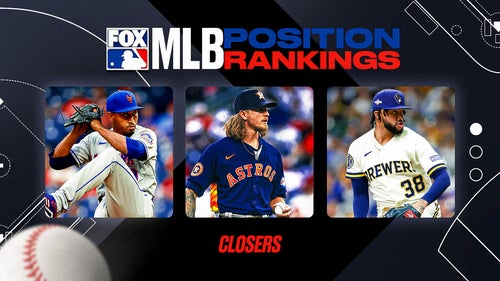
GMs look to economical trades before free agents
Jason Bay and Matt Holliday each had more than 100 RBIs this year.
John Lackey was a staff ace on the American League's second-best team.
Hideki Matsui was a World Series hero for the Yankees. He is getting older and slower, but he can still hit. Come to think of it, the same can be said for Miguel Tejada.
For all five, and many others, free agency is beckoning.
But it might be a while before we learn where they will spend the 2010 season. Free agents can't sign with new teams until Nov. 20.
In the meantime, expect a lot of action on the trade market. The general managers meetings open Monday in Chicago, which could accelerate the already-rapid cadence of this offseason.
The industry generated four noteworthy deals last week, including one (Akinori Iwamura to the Pirates) before the end of the World Series.
Aside from Iwamura, six current or potential everyday players were involved:
Within 48 hours of the final out, that qualifies as a lot of activity. And I don't think it was a coincidence.
Many teams had diminished attendance (and therefore diminished revenues) this season, reducing their desire to pay big money for elite players. And the free-agent pool, on measure, isn't as deep as it was one year ago.
On Friday, Arizona general manager Josh Byrnes cited three factors (all related to the economy) that could force teams to be aggressive in the trade market.
1. The free-agent market this offseason is "fairly weak."
2. Trades offer clubs the chance to shed money from payrolls and make cash-neutral transactions.
3. In most cases, trades involve shorter contractual commitments than free-agent signings.
One American League general manager offered a similar explanation: Because of a widening disparity in revenues between industry haves and have-nots, lower-payroll teams believe their competitive disadvantage in the free-agent market is greater than before; for them, trades have become more essential.
Of course, for the right money and the right players, free agency can work wonders. Ask the champion Yankees, whose three-man starting rotation consisted entirely of pitchers signed last offseason: CC Sabathia, A.J. Burnett and Andy Pettitte.
"Mid-market teams will sacrifice quality for economy," said agent Peter Greenberg. "The larger teams that want to win — and have the money — will go after the best free agents and spend the money in an attempt to compete. The Yankees did that last year. The Phillies did, too, with (Raul) Ibanez."
But bargain shopping can be a wise strategy, and it isn't limited to small- and middle-market teams. After the well-heeled Red Sox acquired Hermida on Thursday, Boston general manager Theo Epstein told The Boston Globe: "This was not a blockbuster. This was a value trade, a chance to get a guy with unfulfilled potential at a reasonable cost.''
In that sense, Hermida was a perfect November trade candidate in this economic climate.
Hermida was once the No. 1 prospect in a talent-rich Marlins farm system for three straight years, according to Baseball America. He has been mediocre in the big leagues but is due to receive a raise (through salary arbitration) on the $2.25 million he was paid this year.
To the Marlins, he was disappointing enough that he wasn't worth the money. To the Red Sox, he was intriguing enough that he was well worth a salary near $3 million.
The same reasoning applied to Iwamura, Teahen, Hardy and Gomez, to varying degrees. They are going to earn more in 2010 than they did in 2009, and their original teams preferred not to pay.
Hermida, Teahen and Hardy, in particular, were viewed as non-tender candidates. Their teams were unsure about offering 2010 contracts worth at least 80 percent of 2009 earnings, in accordance with the basic agreement.
Rather than simply let them go (for no compensation) at the Dec. 12 tender deadline, the respective GMs worked hard to move them last week. With each passing day, Hermida, Teahen and Hardy would have lost a little more trade value.
So, who could be next?
Colorado third baseman Garrett Atkins and Atlanta second baseman Kelly Johnson appear to be textbook cases. Both are coming off disappointing seasons in which they were benched. Both may have lost their jobs to younger, cheaper players: Ian Stewart and Martin Prado, respectively.
Florida second baseman Dan Uggla isn't necessarily a non-tender candidate — he has hit over 30 home runs in three consecutive years — but the Marlins' budget realities (and strong farm system) have raised the possibility of a trade. But Florida GM Michael Hill said last week that there are scenarios in which Uggla's increasing salary could fit into the team's 2010 payroll
"Like other years, clubs explore trade options prior to engaging in the free-agent process," said Mike Nicotera, an agent who represents Mike Cameron and Troy Glaus, among others.
"Remember, liking a free agent doesn't mean you are going to get him. If you know what a club wants in a trade, you can always pull the trigger. Some clubs happened to have surpluses at certain positions, put players out there, didn't ask for much, and those players were moved. Nothing too unusual, in my opinion."
Any team would love to add high-priced players like Sabathia, Burnett and Mark Teixeira, as the Yankees did last off-season. But most GMs have to fill roster openings with good-but-not great players, rather than participate in winter bidding wars for prime talent.
So, for now, the stage belongs to the rank-and-file major leaguers and the teams that yearn to swap them. Bay, Holliday and Lackey are the big names out there, but they will have to wait.










